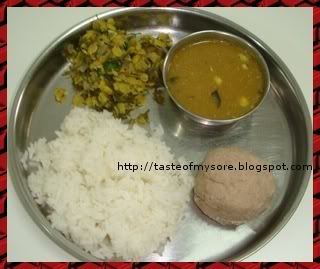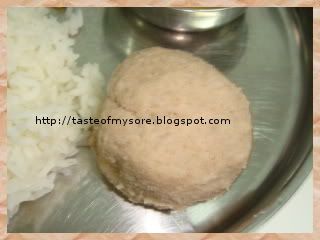It is very tiring to cook after office for many working women. Most of us look for something which can be done fast and get away with the kitchen work. Brinjal Curry is a contribution by my MIL which is tasty, grindless and fast to cook. If you have few frozen chapathis, just re heat them on tava and enjoy them with brinjal curry.
Ingrediants :
Brinjal : 2 big
Onion : 1 big
grated wet coconut : 2 tbsp
Sambar Powder : 1tbsp
Tamarind Paste : 1/2 tbsp (optional)
Turmeric
Salt
Oil : 2tsp
Tadka ingrediants : Mustard, Curry Leaves
Procedure :
1. Cut onions and brinjals into small pieces.
2. Mix sambar powder, wet coconut, salt and turmeric. Leave it aside for 5 mins.
3. You can do some other small little work during this waiting time.
4. In a wide pan, heat oil. Add tadka ingrediants.
5. Now it is the turn of brinjal onion mix to go into the pan.
6. Stirr and mix for next 30 sec. Add tamarind paste and little water (5-8tbsp)
7. Cook brinjal on low flame for next 10 mins or till the brinjals are soft and tender.
8. Check for salt, adjust the curry according to your taste.
9. Remove from stove and set it aside for 5 mins.
10. Serve with chapathi, roti, any indian bread.
Total time taken : 20 mins including cutting time.
The surface area of brinjals increases when they are cut into smaller pieces, thus cutting down the cooking time. The curry has less oil and healthy to eat.
Glycemic Index; what is the glycemic index of your food ?
What Is Glycemic Index?
The Glycemic Index (GI) is a numerical scale used to indicate how fast and how high a particular food can raise our blood glucose (blood sugar) level. A food with a low GI will typically prompt a moderate rise in blood glucose, while a food with a high GI may cause our blood glucose level to increase above the optimal level.
An awareness of foods' Glycemic Index can help you control your blood sugar levels, and by doing so, may help you prevent heart disease, improve cholesterol levels, prevent insulin resistance and type-2 diabetes, prevent certain cancers, and achieve or maintain a healthy weight. A substantial amount of research suggests a low GI diet provides these significant health benefits.
Glycemic Index of Brinjal and Onions are rated at 15 each (with reference to white bread). The GI of the whole curry is the average of individual ingrediants. The ingrediants chosen above for curry are from LOW GI catergory and hence healthy to eat.
Eating healthy to keep fit is something everyone likes to do. I am trying to cook my food with conscience with an intent to keep myself healthy. My approach is to go by glycemic index values of food. This would be my first contribution towards it.
The toal amount of food taken is just divided and eaten at regular intervals and low GI foods helped to maintain sugar levels at these intervals. This is my experince.

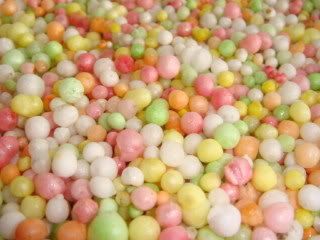
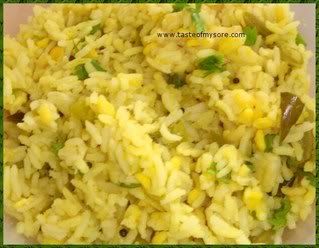
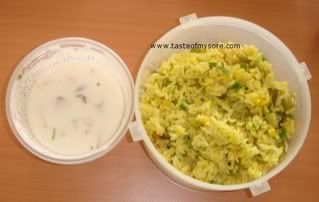

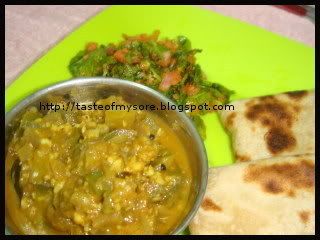

 Chop onion into very thin pieces. Add fenugreek leaves, coconut, red chilli powder and a tsp of oil to onions. When you are ready to serve, add salt and lime juice. Toss and mix. Serve with your favorite bread. It goes very well with Chapathi and Jowar Roti. Enjoy your salad.
Chop onion into very thin pieces. Add fenugreek leaves, coconut, red chilli powder and a tsp of oil to onions. When you are ready to serve, add salt and lime juice. Toss and mix. Serve with your favorite bread. It goes very well with Chapathi and Jowar Roti. Enjoy your salad. 
